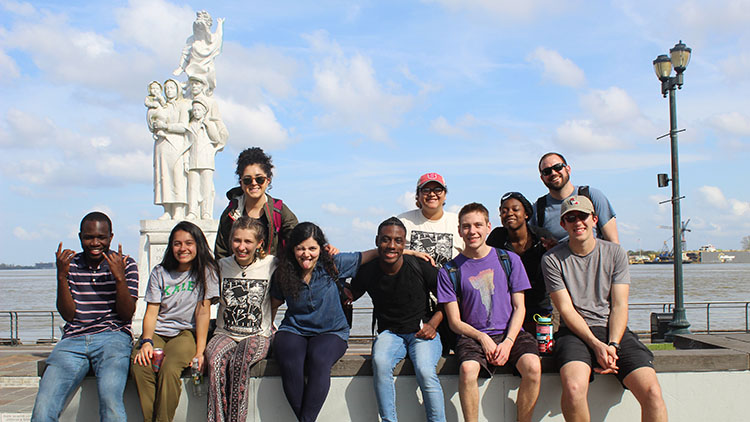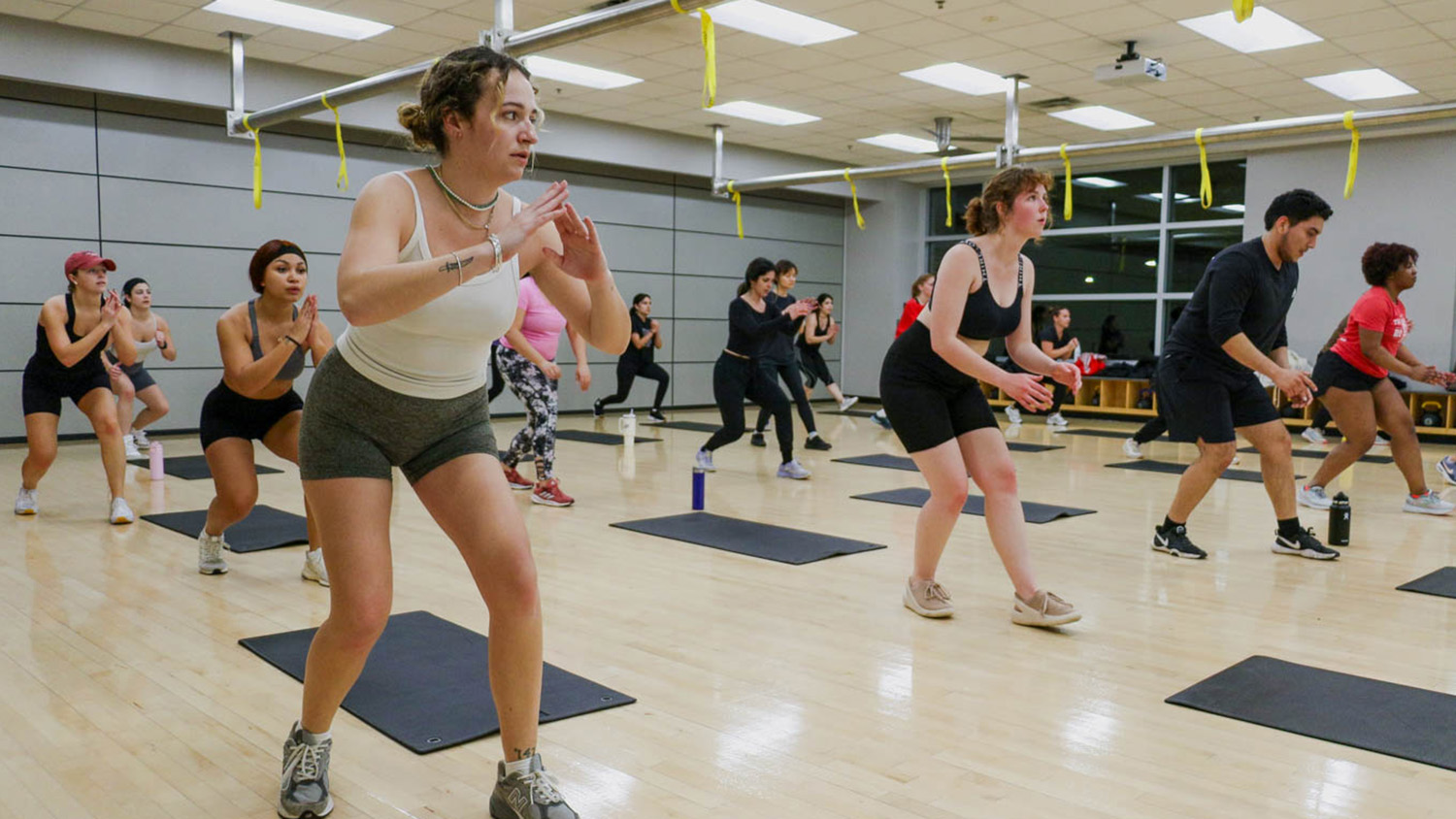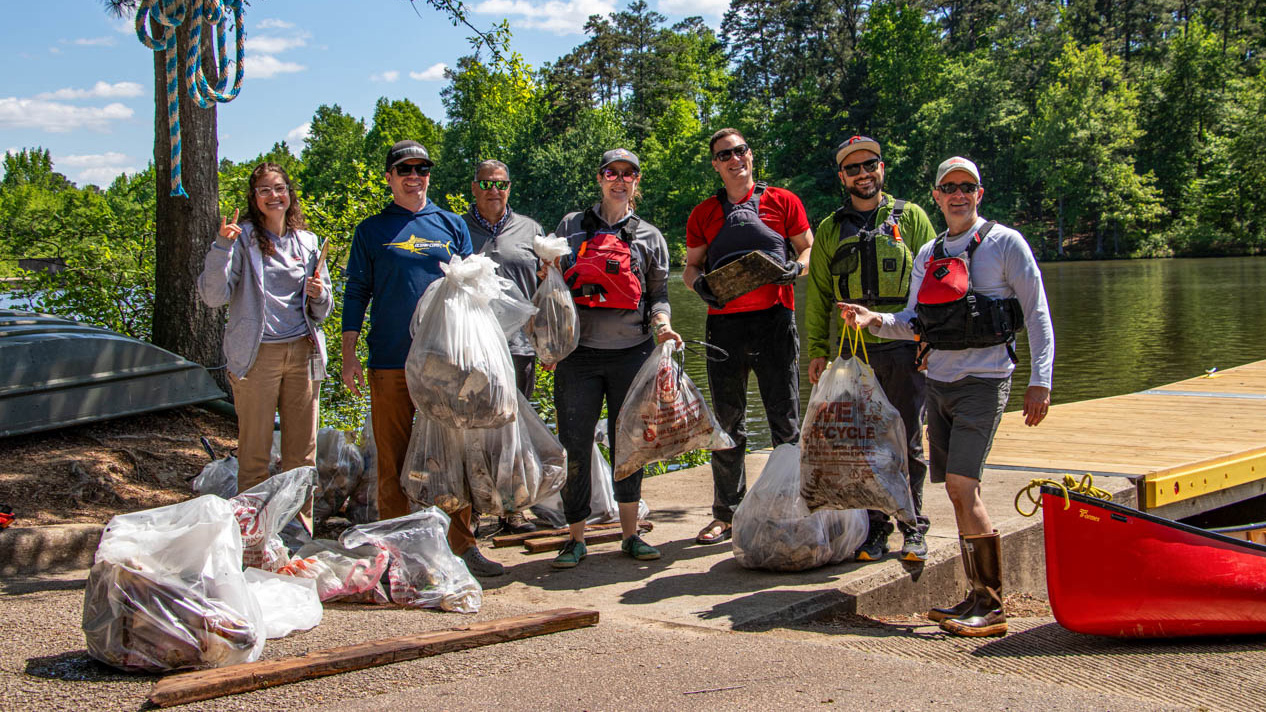DIVE Trip Students Tackle Social and Environmental Justice in the Louisiana Gulf Coast

By: John L. Dunning ’20 business administration
“To get there you drive on these bridges where there’s water everywhere with small patches of land checkered in between,” said Victoria Gerson, a first-year graduate student describing her arrival in Grand Isle, Louisiana. “Ironically, while we were riding in the van on our way there we were listening to podcasts describing how the entire area we were looking at used to be solid land.”
Gerson found herself on the narrow barrier island in the Gulf Coast while trying to gain a better understanding of environmental and social justice as a participant on NC State’s annual Diversity and Inclusion adVenture Experience (DIvE) trip.
The DIvE trip is hosted every spring break by Wellness and Recreation, this year taking a group of 10 NC State students on a nine day excursion to areas that spanned from the Gulf Coast region of the United States to the Mississippi River Delta. Each year the location is chosen to provide a case study in environmental and social justice issues that students can explore as they discuss how these topics are relevant in their own communities and at NC State.
The trip is a great opportunity for students to get outside and have some fun in a new place. “More importantly, I think it’s a vehicle to get them to places where they can learn about environmental justice as well as diversity and inclusion, which in this case is from communities in Louisiana which are being displaced due to coastal land loss,” said Nathan Williams, assistant director of Outdoor Adventures and trip coordinator.
The trip doesn’t limit its scope to the Gulf Coast alone. With stops at several state parks, The National Memorial for Peace and Justice in Montgomery, Alabama and the Presbytère Museum in New Orleans, the trip exposes students to a variety of learning opportunities. However, the issues along the Gulf Coast related to land loss make up most of the trip’s focus.
On average, scientists have observed that Louisiana loses approximately a football field of land, or a 100 by 50-yard space, every hour. This rate of land loss has occurred to a varying degree since 1985, so the damage has had no small impact. “The coast of Louisiana is disappearing, partially because of climate change and partially due to the oil and gas industry,” said Williams. “Hurricanes have become much worse because there’s less of a natural buffer and because of this, communities and entire cultures are being physically moved from their homes.”
One student on the trip found the acronym ‘DIvE’ to be particularly fitting. “In terms of diversity and inclusion there was quite an array of activities and an even more impressive variety of people that we spoke to,” said Princess Mutasa ‘20, a junior majoring in environmental technology and management. “We talked to a woman representing a Native American tribe in Louisiana, we talked to a fisherman who lived on the gulf and we talked to an authentic cajun who lived on the gulf as well.”
Students had an opportunity to expose themselves to these individuals’ way of life, meeting them where they lived and worked, seeing the effects of coastal land loss on the Gulf region from a range of local perspectives. This enabled students to personally observe and understand the struggles of these individuals firsthand.
Williams has coordinated this trip for several years and has a special appreciation of the trip’s importance. “The people who are affected the most are folks who are poor, people of color or people who are otherwise marginalized, so the students have an opportunity to learn about those social inequities.”
One of these affected individuals from a lower socioeconomic status was the oyster fisherman Mutasa described meeting. From the effects of climate change and coastal land loss, this individual and many others in the oyster industry have struggled to sustain themselves, as the oyster population and fishing quality have both dwindled in the Gulf.
“A lot of the various creatures that live out there require brackish water, which is fresh water mixed with saltwater, and as the coast has washed away more and more, salt water has been entering this area, destroying these creatures habitats,” Mutasa said. This development has had a ripple effect where loss of habitat has correlated directly to loss of industry, thus forcing many people out of the area and into new livelihoods.
Many of the ative people have been put in an uncomfortable situation due to the increased flooding that land loss has caused. Some of their lands have disappeared and become unsafe to inhabit. As students traveled to meet the Native women Mutasa described, they had to follow a path of narrow roads that was generally surrounded by flood waters. At one point the group had to drive on the wrong side of the road just to pass an area that was particularly flooded.
“When we met with her, she explained that the road and the surrounding area used to all be connected land in her lifetime,” Gerson said. “The government has plans to remove her and others from the flooded areas due to safety concerns, but her entire family is there and they’ve been fighting the relocation for a while, they’re definitely not happy about the possibility of leaving.”
In between the group’s conversations and activities that dealt with these major environmental issues, they took some time to look within and discuss identity. Gerson described her experience with an identity tree activity where students wrote down aspects of their identity and discussed them. “I learned a little bit about myself because there were things that I didn’t want to divulge, things that I wrote down but didn’t share. Then I had the opportunity to really ask myself why I didn’t feel comfortable sharing those things,” said Gerson. “Our group had a chance to learn about ourselves and get a little closer.”
The DIvE trip has an impressive itinerary that encourages students to expand their perspective on several topics. From discussions on social and environmental justice and how they overlap, to discussing personal identity and inclusion, the trip has student growth in mind. In addition to this very important idea of personal growth, the trip has one more significant benefit that seemed to be consistent among all participants: fostering new friendships.
“One thing that was really great about this trip was how close everyone became. For me, it was inspiring to meet people who were also interested in the same things and from so many different backgrounds. They were people I probably wouldn’t have met otherwise,” said Gerson, “I’m an out-of-state student that just started graduate school this fall, so finding new friends was a concern, but I feel like I’ve done that on this trip.”
- Categories:


